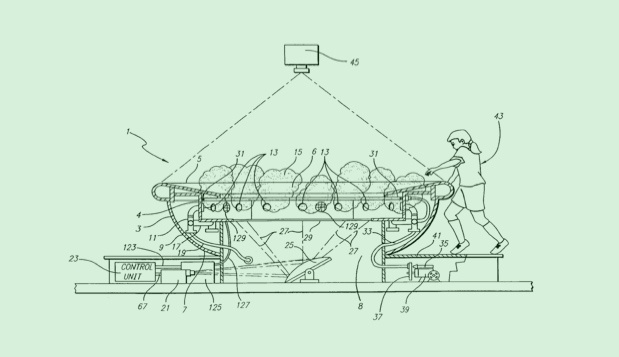Understanding Post-Grant Review
 Last week, I published an article about inter partes review on IPWatchdog.com. Patent Office statistics for FY 2013 and FY 2014 show that there have been a total of 361 decisions on IPR petitions, with 288 trials instituted. There have been 11 cases that have been joined and only 62 petitions denied, which corresponds with an 82.8% IPR petition grant rate. Having said this, the IPR grant rate during FY 2013 was 87.2%, while so far during FY 2014, the IPR grate rate has been 77.2%.
Last week, I published an article about inter partes review on IPWatchdog.com. Patent Office statistics for FY 2013 and FY 2014 show that there have been a total of 361 decisions on IPR petitions, with 288 trials instituted. There have been 11 cases that have been joined and only 62 petitions denied, which corresponds with an 82.8% IPR petition grant rate. Having said this, the IPR grant rate during FY 2013 was 87.2%, while so far during FY 2014, the IPR grate rate has been 77.2%.
But what about post-grant review?
Both inter partes review and post-grant review became a reality when “Phase 2” of the America Invents Act (AIA) became effective on September 16, 2012. But you haven’t seen any post-grant reviews yet, aside from the quasi-post-grant review known as covered business method (CBM) review. That is because the post-grant review provisions apply only to patents issued from applications that have an effective filing date on or after March 16, 2013. Said another way, post-grant review proceedings are only available to patents issuing from applications subject to first-inventor-to-file provisions of the AIA.
CAFC: Pre-AIA 102(g)(2) Captures Reduction in US on Invention Conceived in Russia
 On February 12, 2014, the Federal Circuit issued its decision in Solvay S.A. v. Honeywell International. In this case, Solvay S.A. appealed to the United States Court of Appeals for the Federal Circuit from a judgment of the United States District Court for the District of Delaware in favor of defendant Honeywell International. The district court held that asserted claim 1 of Solvay’s U.S. Patent No. 6,730,817 was invalid under pre-AIA 35 U.S.C. § 102(g)(2). The question at the heart of this appeal, as dictated by the specific factual scenario, was whether an invention conceived by a foreign inventor and reduced to practice in the United States qualifies as prior art under § 102(g)(2). This was the operative question because engineers working at the Russian Scientific Center for Applied Chemistry (“RSCAC”) first conceived the invention, which was reduced to practice in this country by Honeywell personnel pursuant to the RSCAC’s instructions, and they did not abandon, suppress, or conceal it.
On February 12, 2014, the Federal Circuit issued its decision in Solvay S.A. v. Honeywell International. In this case, Solvay S.A. appealed to the United States Court of Appeals for the Federal Circuit from a judgment of the United States District Court for the District of Delaware in favor of defendant Honeywell International. The district court held that asserted claim 1 of Solvay’s U.S. Patent No. 6,730,817 was invalid under pre-AIA 35 U.S.C. § 102(g)(2). The question at the heart of this appeal, as dictated by the specific factual scenario, was whether an invention conceived by a foreign inventor and reduced to practice in the United States qualifies as prior art under § 102(g)(2). This was the operative question because engineers working at the Russian Scientific Center for Applied Chemistry (“RSCAC”) first conceived the invention, which was reduced to practice in this country by Honeywell personnel pursuant to the RSCAC’s instructions, and they did not abandon, suppress, or conceal it.
At trial, Honeywell argued that the invention was conceived by Russian inventors outside the United States and reduced to practice in the United States by Honeywell personnel following the Russian inventors’ instructions before the ’817 patent’s priority date. As a result, Honeywell argued, the invention qualifies as §102(g)(2) prior art. A jury ultimately determined that, as required by § 102(g)(2), the Russian Scientific Center for Applied Chemistry did disclose the invention of claim 1 in the 1994 Russian patent application, which means that they did not abandon, suppress, or conceal the invention. Based on the jury verdict, the district court entered judgment for Honeywell, finding asserted claim 1 invalid under § 102(g)(2).
02.12.14 | CAFC, posts, prior art | Gene Quinn
Crowd-Sourcing for Prior Art
 A recent Wall Street Journal article takes a look at the latest application of crowd-sourcing, this time within the patent industry. As the patent wars rage on, tech companies are soliciting help from the public to crowd-source evidence of prior art. Such evidence is used in patent infringement litigation to invalidate the patents these tech companies are allegedly infringing. The article highlights Article One Partners LLC, a New York-based company hired by major tech-companies to conduct research or prior art in hopes of invalidating the underlying patent.
A recent Wall Street Journal article takes a look at the latest application of crowd-sourcing, this time within the patent industry. As the patent wars rage on, tech companies are soliciting help from the public to crowd-source evidence of prior art. Such evidence is used in patent infringement litigation to invalidate the patents these tech companies are allegedly infringing. The article highlights Article One Partners LLC, a New York-based company hired by major tech-companies to conduct research or prior art in hopes of invalidating the underlying patent.
Here is an excerpt from the Wall Street Journal article entitled, Tech Firms Crowd-Source to Fight Suits, which can be read in full here.
Article One, a New York-based company founded 3½ years ago, opened its Silicon Valley office last August in Palo Alto and has benefited as patent suits have proliferated in the region. With tech companies chasing hot technologies like smartphones and social networking, rivals are increasingly looking to settle their differences in court. Article One says its largest concentration of clients—some 15%—are in Silicon Valley.
Overall, about three-quarters of Article One’s cases are related to high-tech. The site currently features studies seeking prior art on technologies ranging from virtual keyboards to digital payments. Clients pay about $25,000 a study, or they pay varying annual subscription fees. The amount includes the awards for the people who find the best research.
05.10.12 | posts, prior art | Mark Dighton
12 Strange and Amazing Patents
To break up the monotony of all work and no play, I wanted to share with you a great slideshow from Inc.com. The slideshow lists 12 “strange and amazing” patents that are remarkable, and mostly ridiculous. From the high-five machine (US 5356330), to the kissing shield (US5727565), to the burial structure for human remains and significant memorabilia (US 6799399) whose resemblance to the Great Pyramids at Giza is uncanny.
Check out the slide show in its entirety here. In case you thought I was kidding about the remarkable and ridiculous nature of these patents, check out the drawing of the patent for the Interactive Life-Sized Bowl of Soup (US 6168531). That’s right, an interactive life-sized soup bowl not only exists, but there’s a patent for it.
03.7.12 | Patent Resources, posts, prior art | Mark Dighton
Top 5 Patent Law Blog Posts of the Week
 Today we continue our weekly installment highlighting the best of the patent blogosphere from the past week. Highlights include the anticipated revisions to the Patent Bar, a conflict of interest for U.S. Supreme Court Justice Breyer, and an update from the USPTO’s collaborations in improving the patent system via open access.
Today we continue our weekly installment highlighting the best of the patent blogosphere from the past week. Highlights include the anticipated revisions to the Patent Bar, a conflict of interest for U.S. Supreme Court Justice Breyer, and an update from the USPTO’s collaborations in improving the patent system via open access.
1. IP Watchdog: PTO Updates Patent Bar Exam to Test AIA & Appeal Rules – The Patent Bar will change to reflect the new rules incarnated by the America Invents Act. This post outlines what new topics will be tested and how the USPTO has established a trend in making sure the exam is as up to date as possible. The new Patent Bar exam will debut January 31, 2012. For information regarding PLI’s Patent Bar Review (Jan. 11-15, 2012), click here.
2. Peer To Patent: Improving Patent Systems through Open Access– The USPTO hosted its Second Annual Prior Art Collaboration Conference in October 2011, and this post provides the proceedings that developed during the conference. Participants such as WIPO, the European Patent Office, the U.K. Intellectual Property Office, IP Australia, the Japan Patent Office, and the Korea Intellectual Property Office discussed ways in which the patent offices and the public could work together to improve access to prior art. (more…)



No Comments
02.21.14 | Patent Issues, Post Grant Review, prior art, USPTO | Gene Quinn